Morgan Mementos – Sleepers in South Amboy
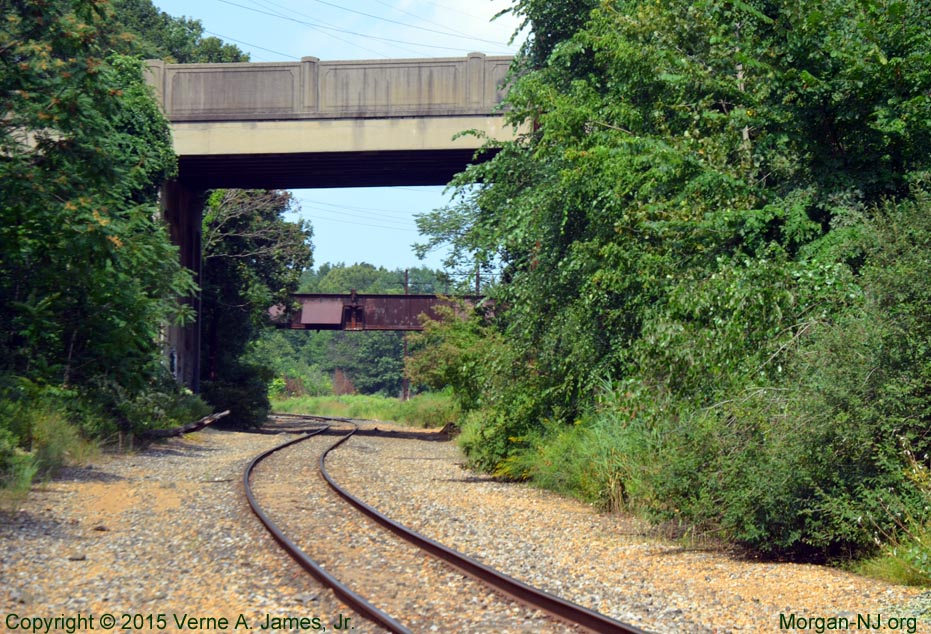
Looking North from the Camden and Amboy Right-of-Way Toward the Route 9/35 Overpass and the Raritan River Railroad Bridge (Demolished in early 2015).
South Amboy still has two railroads running through it, down from its peak of five in the early 20th Century. As the northern terminus of the Camden and Amboy (C&A) Railroad, the first railroad chartered in the United States, the first railroad built and operated in New Jersey, and nearly the first railroad built in the United States, South Amboy made history in the railroad world but I have never really seen or heard anyone tout another specific “first” credited to South Amboy. It is deeply embedded in old books and has to do with “Sleepers.”
No doubt like you, I had never heard the phrase “sleepers” used in relation to railroads except perhaps as a type of cabin on passenger cars. The original phrase however was the name of the large stone blocks which were used in early railroad days to firmly hold the track in place.
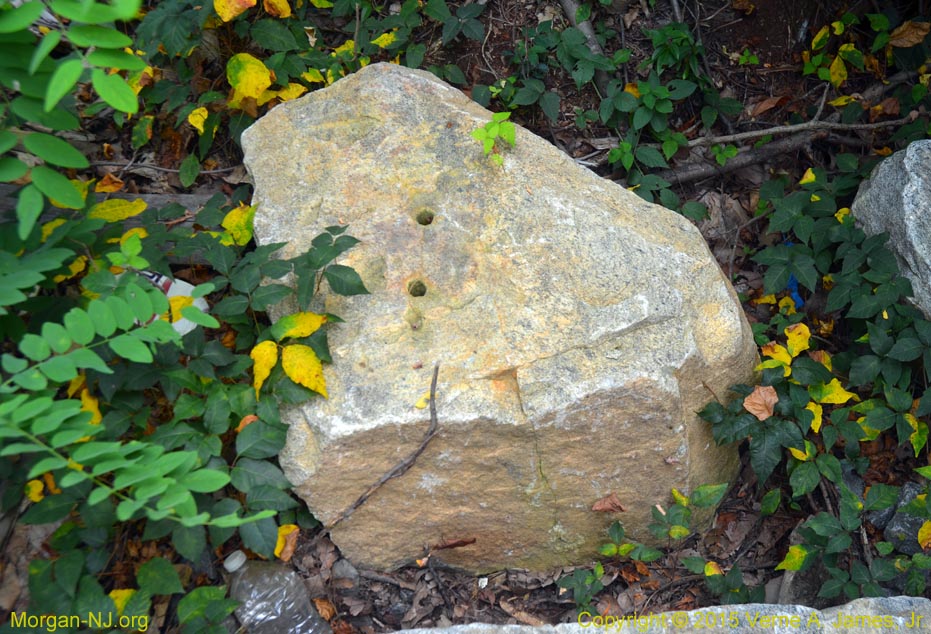
Abandoned Camden and Amboy Railroad Sleeper Stone. Notice the Bowling Ball-like Drilled Holes Used to Hold the Railroad Track.
The C&A used granite sleepers, long reported to have been made by prisoners at Sing Sing Prison on the Hudson River in New York – more about this topic later, which were approximately two feet square by ten to thirteen inches high. The rails were fastened to the row of sleepers by means of iron plates and spikes. Other railroads, such as the Allegheny Portage Railroad in Pennsylvania, used limestone sleepers. Some used marble. Perhaps other railroads used other readily available rock types. Two hundred years ago, at the beginning of worldwide railroad days, the concept of using very heavy stones to support iron rails seems the obvious way to do things. It was especially useful before the days of steam locomotives when horses were used to pull rail cars as the sleepers could be placed at ground level making it less obstructive for the horses pulling the cars. In general this worked pretty well, even after heavy steam locomotives started to be used.
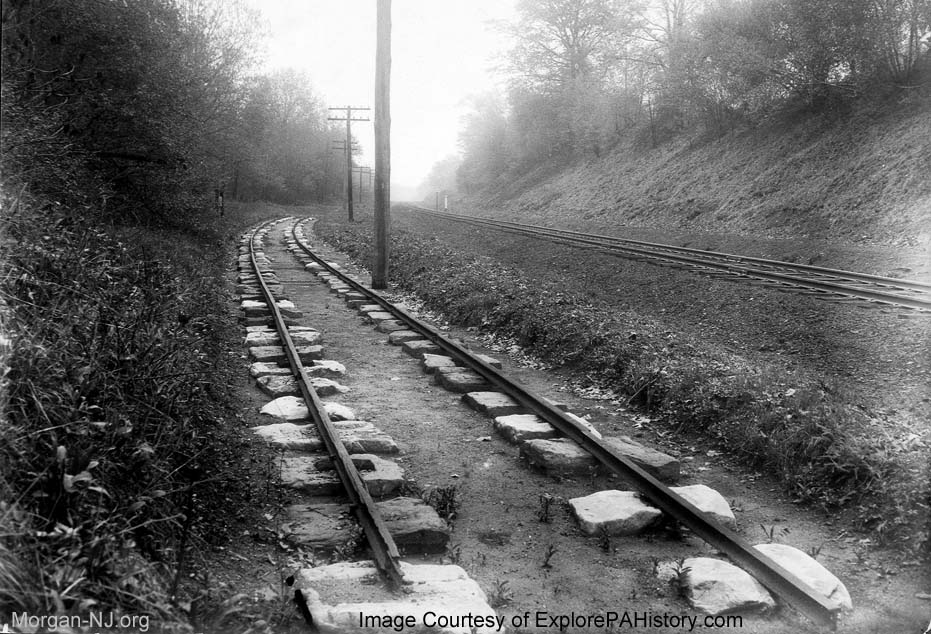
Jamesburg, NJ – 1931 Image of an Abandoned Segment of the Camden and Amboy Railroad Showing How Sleepers Were Used to Hold the Track in Place. Image Courtesy of ExplorePAHistory.com.
When fully completed in January 1834, the railroad stretched 61 1/3 miles from Camden to South Amboy and was composed of thousands of individual iron track sections each sixteen feet in length. Sometime in 1832, however, before its completion, the railroad builders ran into some problems. The problems involved the “deep cut” section of South Amboy and the inability of the prisoners of Sing Sing to “make big ones into little ones” quickly enough, i.e., Sing Sing couldn’t provide the sleepers fast enough to keep up with the railroad construction. From my understanding, based on the description of “deep cut” in C&A related documents, combined with the knowledge that the bridge over the railroad tracks next to the intersection of Main Street and Washington Road in present day Sayreville (which used to be part of South Amboy in 1832) is named “Deep Cut,” and walking this area which has high cliff walls along the curvy tracks in my younger days, “Deep Cut” is likely the area stemming from the “Deep Cut” bridge along the tracks toward present day South Amboy ending somewhere northeast of the Route 9/35 bridge over the railroad tracks (see below map).
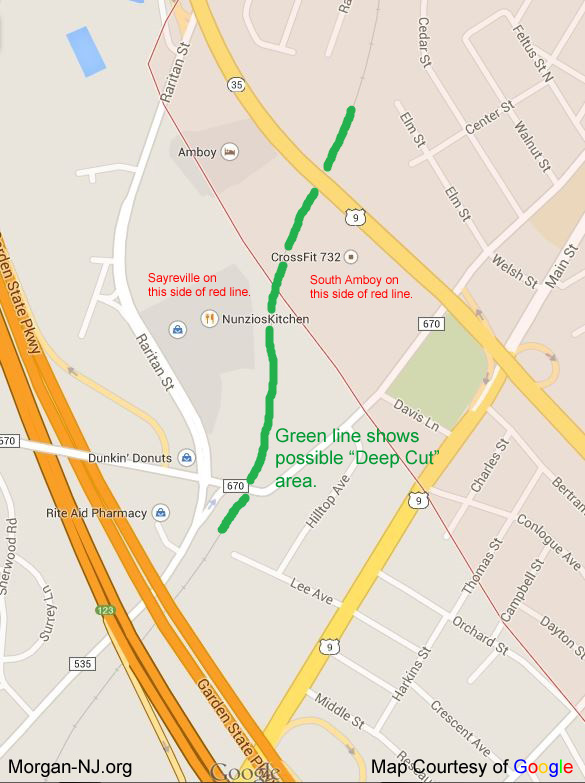
Area Along the Camden and Amboy Railroad Right-of-Way Likely Known as “Deep Cut.” Image Courtesy of Google Maps.
What is the historic fact which doesn’t really seem to be prominently associated with South Amboy/Sayreville, you ask? Well, it is described in a section of the book, “Ceremonies Upon the Completion of the Monument Erected by the Pennsylvania Railroad Company at Bordentown, New Jersey, to Mark the First Piece of Track Laid Between New York and Philadelphia, 1831, November 12, 1891 by Pennsylvania Railroad Co.:”
“The road from Bordentown to Hightstown was completed by the middle of September, 1832, and from Hightstown to South Amboy in the December following. The “deep cut” at South Amboy, and the curves of the track there, gave the civil engineers great trouble.
THE FIRST AMERICAN STANDARD TRACK.
The laying of the track through the “deep cut” led to an event of great importance to future railway construction. The authorities at Sing Sing having failed to deliver the stone blocks rapidly enough, Mr. Stevens [C&A President and Chief Engineer] ordered hewn wooden cross-ties to be laid temporarily, and the rail to be directly spiked thereto. A number of these ties were laid on the sharpest curves in the cut. They showed such satisfactory properties when the road began to be operated that they were permitted to remain, and the stone blocks already in the track were replaced by wooden ties as rapidly as practicable. Without doubt the piece of track in “deep cut” was the first in the world to be laid according to the present American practice of spiking the rail directly to the cross-tie.”
Since this driven by necessity discovery, and for well over 100 years until the relatively recent incorporation of the usage of concrete railroad ties, all railroads used wooden ties instead of sleepers. It all started in South Amboy!
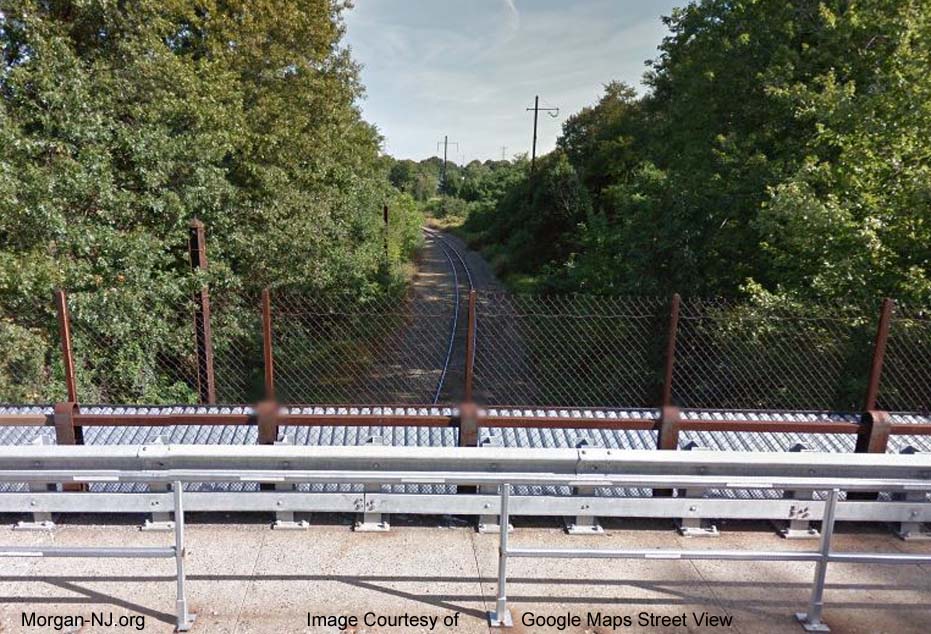
Looking North onto the Camden and Amboy Right-of-Way from atop “Deep Cut” Bridge. Image Courtesy of Google Maps Street View.
Let’s expand on the earlier mentioned topic regarding Sing Sing prisoners having made the sleepers for the C&A Railroad. Firstly, my thanks goes out to one of my many great Jesse Selover School teachers and intense local Railroad historian, Mr. Al Baumann, and to the noted C&A guru historian, Mr. John Kilbride, for further information about C&A sleepers. Mr. Kilbride referred me to the April 2015 issue of the National Railway Historical Society’s NRHS News which featured an in-depth article entitled, “Stone ‘Sleepers’ for Early Railroad Found in New Jersey” authored by long time New Jersey Hydrogeologist Pierre Lacombe. In this article, Mr. Lacombe points out that it was extremely unlikely that Sing Sing prisoners would have made the paving stones asking, “why would cost-conscious Robert and Edwin Stevens pay to transport thousands of stone sleepers more than 300 miles from Sing Sing to Bordentown when there were scores of stone quarries within 20 miles of the Bordentown? In addition, history shows that prisoners at Sing Sing quarried marble, yet none of the sleepers in the Bordentown area are marble.” Mr. Lacombe also included an image of an October 16, 1830 Philadelphia Inquirer newspaper ad seeking “price quotes for 30,000 sleepers, 30,000 construction blocks, and 20,000 feet of stone rail”.
The facts presented in the article leave little doubt about the need to doubt the contention that Sing Sing prisoners provided all of the sleepers for the railroad. Whether they provided any is unclear to me but in any case, in 1832 the C&A still found itself in the position of not having enough stone sleepers as it was rushing to complete laying the railroad track thus requiring them to come up with what was thought to be a short term solution.
Fortunately, the community of Spotswood, NJ has history minded people who created a very nice show case memorial featuring a preserved section of the C&A track along with sleepers. This memorial is located on Main Street in Spotswood just past the “Welcome to Spotswood” sign as you are heading south west from Route 18. Much thanks for this image goes to Mr. Frank Yusko, one of the foremost authorities on the topic of the T. A. Gillespie Loading Company, and much loved teacher who started at St. Mary’s High School in South Amboy and retired from Spotswood High School. Frank’s videos about the 1918 Gillespie explosion and 1950 South Amboy Powder Pier explosions, along with full interviews with survivors of the events, are available from Visionary Video Studios (visionaryvideostudios.com).
Originally posted on May 2, 2015.
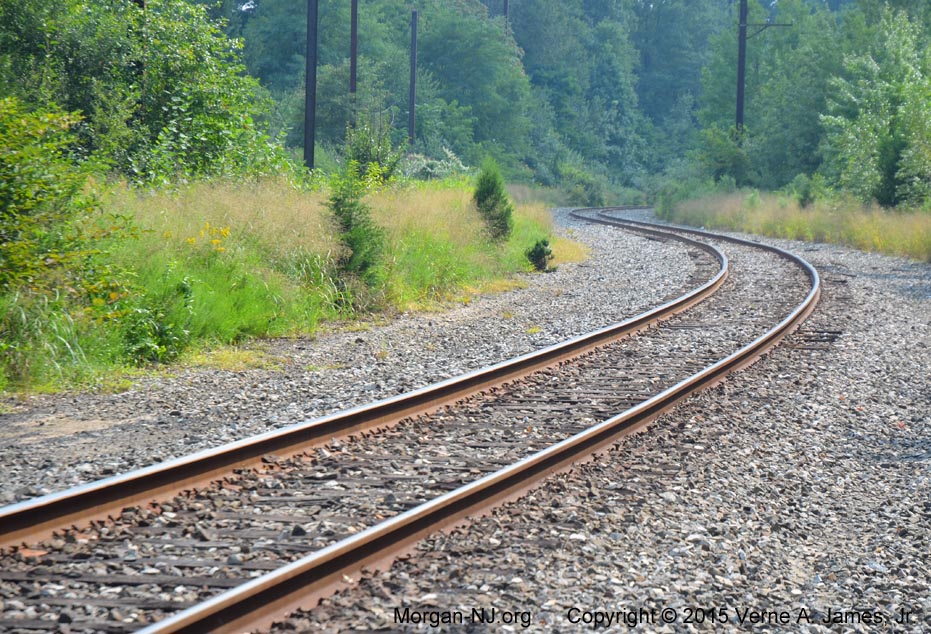
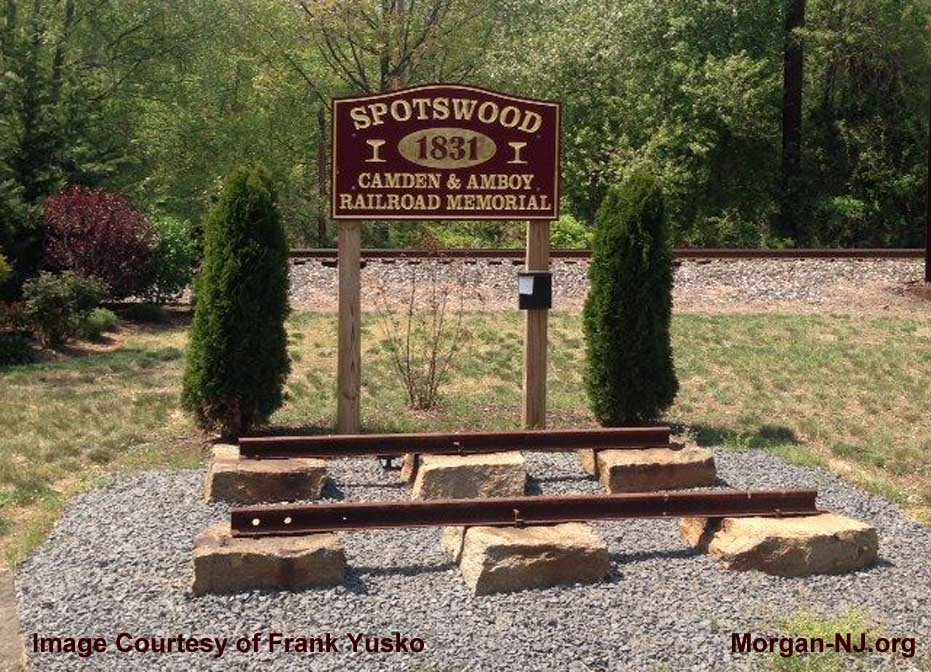
Hi: Neat to take a walk back home in South Amboy & Spots wood. I rember Old track at yeast plant on Borden town Ave. Thanks Ed.
Oct 22, 2016 will be the next Christ Church Cemetery tour where the historical society portray residents of the cemetery.
I do have copy (copies) of invoices from Sing Sing Prison for (sleeper) stone to the C&A…….
I discovered some outside Jamesburg at
40.339,-74.460
Very nice article! I am writing my own series of articles for the Mid Eastern Region of the National Model Railroad Association on the history of railroad technology. Starting with rails, no rails no railroad. Also being a Stevens Institute of Technology (1976 BE, 1977 ME) Graduate and former Stevens rail club member and eventually President I have a very special place in my heart for Colonel John and his son Robert. I have been trying to figure out where, when and why the Morgan NJ-org photo. My best guess based upon what you have as well as other sources is the he photo was made by the Pennsylvania Railroad after they refurbished that section of track to display the replica of the John Bull (now at the Pennsylvania Railroad Museum) to celebrate the 100 year anniversary of the Camden and Amboy Railroad which the Pennsy liked to consider it’s roots. Your article indicates 1931 (right year) and Jamesburg.
I assume this section is all gone now. Quite a shame. Interesting that the rail used is very close to Robert Stevens original patent, the tab seen on the left rail and single hole on the right is as his patent drawing. The length looks close to what they would have used as well. No doubt those not original rails, but some of the sleepers may be.
Boy if you have any other information I would love to hear it, Thank you, like I said a Very Nice job.
Hi John! I emailed you some info. Please let me know if you received it. Verne
what’s the meaning of 40 Horses?